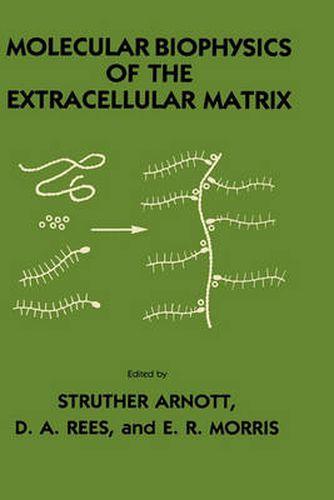Readings Newsletter
Become a Readings Member to make your shopping experience even easier.
Sign in or sign up for free!
You’re not far away from qualifying for FREE standard shipping within Australia
You’ve qualified for FREE standard shipping within Australia
The cart is loading…






This title is printed to order. This book may have been self-published. If so, we cannot guarantee the quality of the content. In the main most books will have gone through the editing process however some may not. We therefore suggest that you be aware of this before ordering this book. If in doubt check either the author or publisher’s details as we are unable to accept any returns unless they are faulty. Please contact us if you have any questions.
Biopolymers, such as proteins and nucleic acids have been subjected to a rational succession of structural studies in which the determination of chemical compositions, link- ages, and sequences is followed by investigations of molecu- lar architecture and interactions. By the end of the 1960s the covalent structures of glycosaminoglycans and proteo- glycans had been defined both within the carbohydrate chains and in respect to their linkages to protein. The scene was therefore set for successful probing of three- dimensional shapes and intermolecular associations. For- tunately, during the 1970s appropriate physical methods were themselves greatly increasing in power. Consequently much progress has been made using X-ray diffraction anal- ysis of hydrated films, nuclear magnetic resonance spectro- scopy, and chromatographie methods for investigation of molecular interactions in solution. We now have a great deal of information about molecular shapes, their sensitiv- ity to environment (especially associated cations), and their modes of interaction that could be relevant to super- molecular assemblies in biological milieux. For these rea- sons we judged that it would be timely to distil the main conclusions from this phase of research to prepare for the next, which will involve detailed study of the interplay be- tween biological function and molecular structure. The idea for this volume emerged from a workshop meeting at Colworth sponsored by the Biochemical Society.
$9.00 standard shipping within Australia
FREE standard shipping within Australia for orders over $100.00
Express & International shipping calculated at checkout
This title is printed to order. This book may have been self-published. If so, we cannot guarantee the quality of the content. In the main most books will have gone through the editing process however some may not. We therefore suggest that you be aware of this before ordering this book. If in doubt check either the author or publisher’s details as we are unable to accept any returns unless they are faulty. Please contact us if you have any questions.
Biopolymers, such as proteins and nucleic acids have been subjected to a rational succession of structural studies in which the determination of chemical compositions, link- ages, and sequences is followed by investigations of molecu- lar architecture and interactions. By the end of the 1960s the covalent structures of glycosaminoglycans and proteo- glycans had been defined both within the carbohydrate chains and in respect to their linkages to protein. The scene was therefore set for successful probing of three- dimensional shapes and intermolecular associations. For- tunately, during the 1970s appropriate physical methods were themselves greatly increasing in power. Consequently much progress has been made using X-ray diffraction anal- ysis of hydrated films, nuclear magnetic resonance spectro- scopy, and chromatographie methods for investigation of molecular interactions in solution. We now have a great deal of information about molecular shapes, their sensitiv- ity to environment (especially associated cations), and their modes of interaction that could be relevant to super- molecular assemblies in biological milieux. For these rea- sons we judged that it would be timely to distil the main conclusions from this phase of research to prepare for the next, which will involve detailed study of the interplay be- tween biological function and molecular structure. The idea for this volume emerged from a workshop meeting at Colworth sponsored by the Biochemical Society.